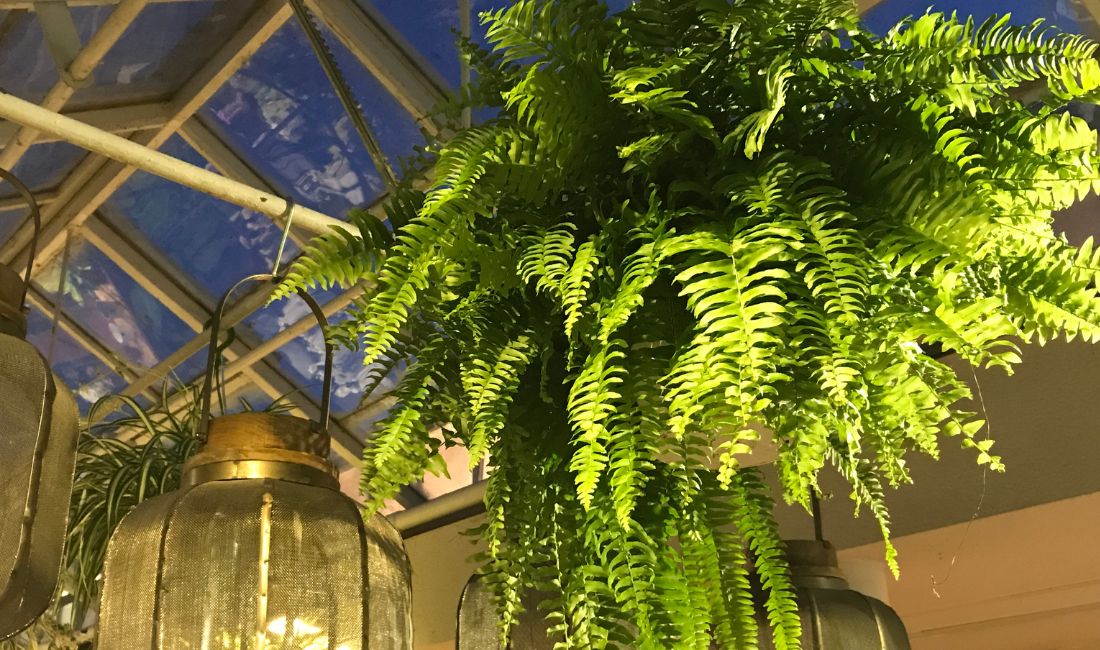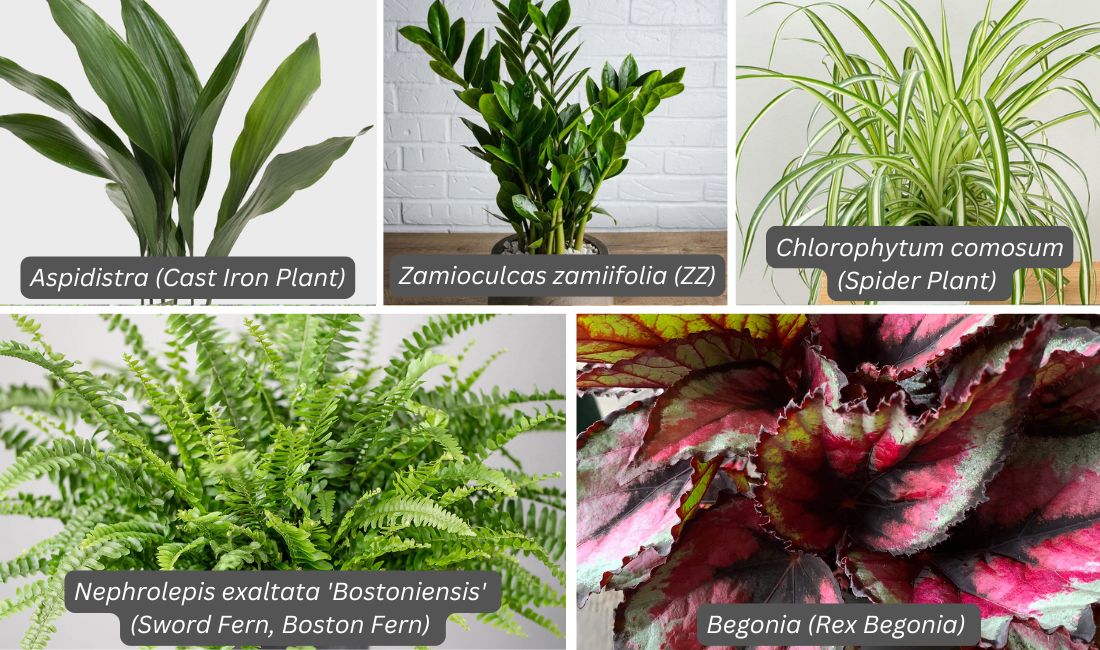
Shade tolerant houseplants are ideal for brightening up those shady corners. Houseplants bring colour, life and style to a home which is particularly useful and appreciated in darker rooms, such as those facing north or with small windows.
Many houseplants originate on shady forest floors so will grow well in lower light levels – as ever, it’s a case of choosing the right plant for the right place. Many beautiful ferns and foliage plants thrive in a shady corner, adding a touch of nature and softness to interiors and creating a more inviting and calming atmosphere.
In addition, the extensive range of beautiful interior pots and planters in all sizes, patterns, colours and materials means that there’s something for every taste and style.
Caring for Low Light Houseplants
Avoiding direct sunlight is essential for any low light houseplants as these plants are specifically adapted to lower light levels so will suffer in direct sunlight.
Low light houseplants thrive best when grown in pots with drainage holes which are then placed in outer decorative pots with no drainage holes. Not only does this avoid the risk of water dripping and overflowing but it also increases the humidity around the plant - especially if you add Hydroleca clay granules or pebbles/gravel to the outer pot.
It's important to be aware that some houseplants are toxic to pets – we do recommend always checking with some online research.
Tips for ensuring the health and longevity of your low light houseplants include:
It’s essential not to overwater low light houseplants as they generally grow slower and require less water than plants in brighter locations. Water only when the top few centimetres of soil feel dry to the touch and ensure the pot has good drainage to prevent soggy roots and root rot.
Similarly, low light houseplants require less feeding than plants in brighter locations so feed lightly only from spring to autumn, and reduce or stop feeding in the winter.
Rotate the plants occasionally to ensure even light exposure and to prevent one side from stretching towards the light.
Cleaning your plants’ leaves occasionally is particularly important for low light houseplants, as any accumulated dust can reduce the plants’ ability to absorb more light for photosynthesis. Wipe the leaves with water or specialist products.
Unlike some other houseplants that may need repotting more regularly, low light houseplants need repotting only every 2 to 3 years, depending on the species and the active growth.
Regularly check for any pests and diseases and treat accordingly – our houseplant team are happy to advise.
If natural light is severely limited, you may want to consider using artificial grow lights to supplement the light intake of the plants. In recent years, lighting systems have become more readily available, and are now more budget-friendly, energy-efficient, and easier to set up.
Our Favourites
We stock a range of continually changing low light houseplants – with the most popular including:
Zamioculcas zamiifolia (ZZ) – easier to refer to by its common name of ‘ZZ’ this plant may look exotic but it’s tough and thrives in almost any light conditions including low light. The stunning glossy foliage looks good in almost any location and complements any style of interior design. Slow growing, eventually up to about 1m tall, the ZZ plant only requires infrequent watering, typically once every 2 to 3 weeks.
Aspidistra (Cast Iron Plant) – as tough as it sounds, the Aspidistra is hard to kill! Resilient and needing very little attention, its large, arching leaves add a tropical look to any room. Some varieties of Aspidistra have all green leaves, while others have spotted or striped. An elegant and tolerant plant that is as tough as old boots!
Nephrolepis exaltata 'Bostoniensis' (Sword Fern, Boston Fern) – a very popular indoor fern with lush green, feather-like fronds growing upright initially before arching and drooping as they mature. Loving high humidity, they are ideal for the kitchen or bathroom – don’t let them dry out and mist them regularly.
Begonia (Rex Begonia) – of the many different types of indoor Begonia, the Rex Begonia thrive in low light and their colourful and patterned dramatic foliage brings welcome pops of colour to shady corners. There are many different cultivated varieties, sporting large leaves with streaks, spirals or veins, and often with splashes of silver, pink, purple, green and burgundy. Flowers tend to be inconspicuous and are best removed to keep the leaves looking their best. Keep them moderately moist, never dry but never soggy; to avoid botrytis try to water just the compost and not the leaves.
Chlorophytum comosum (Spider Plant) – a popular, fast-growing, very easy-to-care-for trailing houseplant with arching variegated green leaves. Much loved for the way that lots of small spider plant babies grow, attached to the mother plant by long stems. To propagate a Spider Plant simply snip off the babies and place in water until they root before potting them on, or leave them attached to the mother plant until they develop their own baby roots and then remove and pot on. Always on trend and in fashion, everybody should have at least one Spider Plant … which will soon lead to more!

Clifton Nurseries Garden Centre
London, W9 2PH
0207 432 1867
Monday – Saturday 9am-5:30pm, Sunday 10.30am-4.30pm
Clifton Nurseries Garden Services
London, W9 2PX
